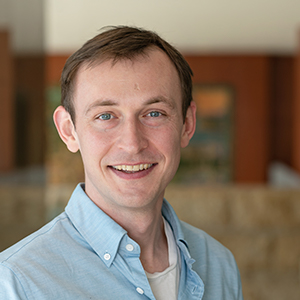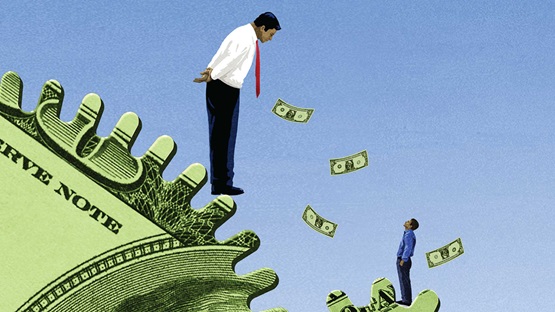Congress gave the Fed a dual mandate: Maintain stable prices and pursue maximum employment. Congress did not, however, specify how to track these goals. For price stability, the Fed has adopted a target of 2 percent inflation, a specific and measurable statistic. Determining if maximum employment has been achieved is much harder.
The key numbers used to judge where we stand relative to the Fed’s “maximum employment” mandate are the labor force participation rate—how many people want to work—and the unemployment rate—how many of those people cannot find work. Both numbers matter. Low unemployment does not equal maximum employment if relatively few people are searching for jobs. So in the course of making monetary policy, the Fed has a keen interest in where unemployment and labor force participation are heading.

A lot is at stake in these decisions. If the Fed mistakenly thinks that participation has hit its ceiling, it could start addressing inflation too early, raising interest rates and cooling the labor market as costs rise for businesses making investments and consumers financing large purchases. This dynamic gives up important earnings opportunities, but waiting for participation gains that do not materialize could allow inflation to eat away at everyone’s purchasing power. Both risks are particularly acute for low-income households. To get it right, the Fed must be able to gauge how far we are from maximum employment at any given time.
The Federal Reserve System working paper “Maximum Employment and the Participation Cycle” by Bart Hobijn and Ayşegül Şahin provides exactly this guidance, uncovering the reasons why participation rates fall during recessions and showing how and when they tend to recover.
The participation cycle
In the early 1970s, just before the Fed first gained its legal mandate to pursue maximum employment, the economists Arthur Okun and George Perry both observed that many more people started looking for jobs when unemployment was low than when it was high. This meant that just focusing on workers who were unemployed at the worst point in a recession understated the benefits of recovery because it missed all the workers who enter an improving labor market. The fact that labor force participation rose when unemployment fell, Okun and Perry argued, meant that policymakers should actively pursue lower unemployment.
But how low? As Perry noted, “The precise forces governing participation rates are complex.” This made it hard to know how long to run a “high-pressure” economy in order to reap the labor market benefits without incurring burdensome price increases.
Hobijn and Şahin describe the forces that shape participation by analyzing labor market flows. Labor flows detail how the labor market is changing. The unemployment rate—a stock measure—is the share of the labor force that is unemployed in any given month. But the unemployment-to-nonparticipation flow is the share of unemployed workers who leave the labor force between two months. Analyzing flows is helpful because different economic forces determine whether people find and lose jobs or whether they leave or enter the labor force.
The insight of Hobijn and Şahin’s paper is that one of the most important factors driving participation over the business cycle is the unemployment rate itself. At first this seems puzzling as an explanation for changing labor force participation because it does not involve changes in how workers actually decide to enter or leave the labor force. But while changing participation decisions matter for long-run trends—like the decades-long decline in participation for men or the rapid rise of participation for women in the 1960s, ’70s, and ’80s—they do relatively little to explain why participation varies over the business cycle.
Unemployment matters because it is so often a stopping point for people who eventually give up searching for a job and leave the labor force. About 25 percent of unemployed people leave the labor force each month while only 3 percent of employed people do. The rates at which these two groups exit the labor force do not vary much during recessions and recoveries, but the share of people who are unemployed and who thus are more likely to leave the labor force varies widely over the business cycle. “Today if somebody moves between employment and unemployment, nothing happens to the labor force,” Şahin said, “but since an unemployed individual is eight times more likely to leave the labor force than an employed person, going forward, this is going to have an effect on the participation rate.”
The way that participation, driven by unemployment, affects the share of the population that is employed—a common measure of maximum employment—is labelled the “participation cycle.” Recessions begin with a spike in unemployment. Then participation falls as workers in the newly enlarged unemployment group exit the labor force, which further pushes down employment. When unemployment rates recover, the flow of workers out of the labor force slows down, but it still takes time for nonparticipants to rejoin.
A new roadmap
By pinpointing the role of unemployment in labor force participation, the authors provide policymakers with better ways to judge how far we are from maximum employment. Central bankers managing a recovery can take several lessons from this analysis.
The first is that they are right to ascribe a big role to participation. The participation cycle has almost as large an effect on the share of people employed as changes in the unemployment rate itself. A proper measurement of maximum employment should account for it.
Second, the participation cycle lags cyclical changes in unemployment and takes longer to resolve. “That's why you need to know what happened to these margins in the past,” said Şahin, “to be able to say something about participation today.” This pattern motivated Minneapolis Fed President Neel Kashkari to comment in a 2020 essay that “we have repeatedly believed we were at or beyond maximum employment only to be surprised when many more Americans reentered the labor market or chose not to leave, increasing the productive capacity of the economy without causing high inflation.” The participation cycle shows how the relationship between unemployment and participation creates this exact dynamic pattern.
The third is that inclusive recoveries all hinge on the same cyclical patterns in unemployment. The updated Fed monetary policy guidance in 2020 defines maximum employment as a “a broad-based and inclusive goal that is not directly measurable and changes over time owing largely to nonmonetary factors that affect the structure and dynamics of the labor market.” Hobijn and Şahin’s analysis shows that while the size of the participation cycle differs across groups, its general shape does not. Black workers, for example, have much higher spikes in unemployment than White workers during recessions, and their participation rates fall more as well. The labor flows that underlie these differences, however, work the same way. Keeping unemployment low maintains job stability for all groups and keeps the participation cycle at bay.
Equipping policymakers
Central bankers from around the world heard Şahin discuss these ideas at the 2021 Jackson Hole Economic Policy Symposium. Their policymaking counterparts in the 1970s faced the same relationships that Okun and Perry noticed and that Hobijn and Şahin dissect: Longer expansions promote employment stability, allow the participation cycle to resolve, and move us closer to maximum employment. With the insights of modern economic research, however, economic policymakers today can manage recoveries with a more nuanced understanding of where the labor market stands and where it is heading.





